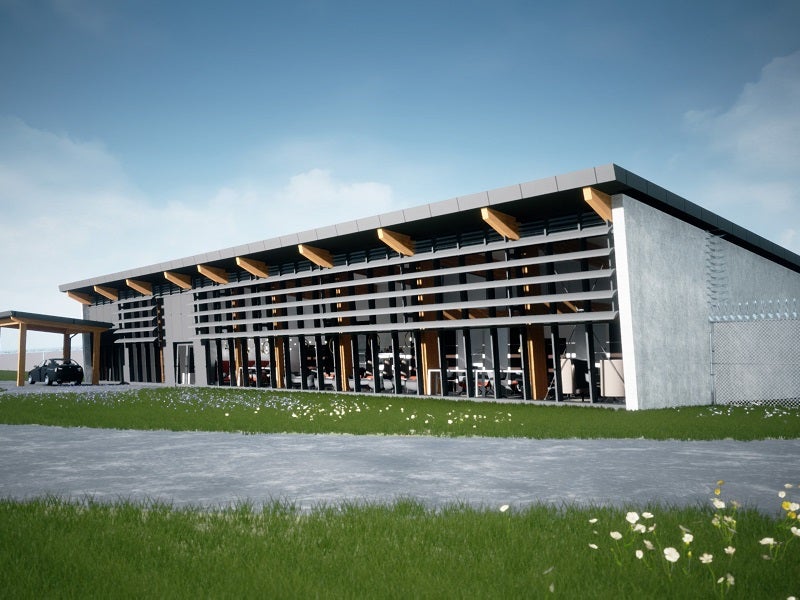
By way of its 80th birthday celebrations, last year saw passenger numbers at Manchester Airport soar to a record 28 million.
It was a significant milestone for the airport – the UK’s third largest – which, since the early 1990s, has made it its mission to attract non-London haul services to the north-west of England. Recently, it has announced new services to the likes of Ethiopia and India.

Discover B2B Marketing That Performs
Combine business intelligence and editorial excellence to reach engaged professionals across 36 leading media platforms.
Consequently, the airport features heavily in the Northern Powerhouse concept, which seeks to position the north of England as an economic competitor to London and the Southeast. Regional leaders are keen on attracting more airlines from beyond Europe as the UK gears up to depart the EU.
Owner Manchester Airports Groups (MAG) – which also owns London Stansted and East Midlands – is evidently keen to put itself forward as a progressive operator. This applies to passenger experience, too.
Earlier this year, it was announced that MAG is investing in a new private terminal for passengers flying on commercial airlines. Standing separately from the airport’s existing three terminals, passengers will be able to upgrade to the PremiAir terminal, irrespective of ticket class.
Described as “affordable luxury”, the new terminal – situated next to the airport’s runway visitor park – applies to both departing passengers and arrivals, with prices starting at £50 per person, as revealed in a recent MAG press release.

US Tariffs are shifting - will you react or anticipate?
Don’t let policy changes catch you off guard. Stay proactive with real-time data and expert analysis.
By GlobalDataPerks include an elegant lounge space, with accompanying panoramic views of the airfield; complimentary food served by a resident chef; baggage processing; a dedicated security channel; private airside transfers; and personal luggage return.
Billed as the first of its kind by MAG, Jacobs was selected to design the new terminal. Having worked on hundreds of previous aviation projects, Ben Cozens, a divisional director with the group, confirms PremiAir is “unique”.
Having opened its doors in September, below Cozens provides a glimpse of how Jacobs has gone about creating the latest addition to Manchester Airport – a hub in clear growth mode.
Ross Davies: when did Jacobs and Manchester Airports Group (MAG) first sit down together?
Ben Cozens: Jacobs and MAG have been working collaboratively together for over ten years. We provide professional services to MAG under their professional services framework.
MAG is constantly reviewing its offer to passengers, looking for new opportunities to improve and enhance the passenger experience and offer them truly innovative products.
MAG identified an opportunity to develop a high-end travel experience that caters for all business and leisure travellers, regardless of the class of their ticket, and who want a streamlined service with boutique features.
MAG first approached us about this project in early 2018. Our full time, co-located core team and our lead architect, Brian Babish, worked collaboratively with MAG to develop the concept design. As a full multi-discipline aviation specialist, Jacobs was able to deliver the whole project in-house, drawing on our design expertise.
RD: Could you provide a brief summary of some of the main design features of the new private terminal?
BC: PremiAir offers all the key amenities of a conventional terminal building, but is designed to offer a personalised service. Passengers using it will enjoy a fast-track check-in and security service, an intimate lounge space with fantastic airfield views, and a private transfer to the aircraft gate.
Jacobs provided full multi-discipline detailed design services to MAG for the delivery of the project, from initial concept through to delivery. From early architectural space planning through to interior design services, all elements of the scheme have been provided through Jacobs’ in-house resources.
We have designed a simple but elegant building that uses a natural, wooden structural frame, full-height glazing and extra height volume to combine warm, intimate rooms and the feeling of space with visual connection to the airfield. Privacy and convenience are at its core.
RD: And what of its green credentials?
BC: The building itself is highly sustainable. The design has optimised the building’s aspect and materials – such as glazing and insulation – to create a space which minimises energy consumption.
RD: What have been some of the main challenges Jacobs encountered over the course of the project?
BC: The challenge was incorporating all the functionality of a full-scale terminal into an area of 500m2, whilst retaining the sense of space and ensuring a seamless guest journey from arrivals to departures.
Through careful space planning and identifying efficiencies it has been possible to provide the full functionality required for the regulated activities whilst maximising the space available for passenger amenities.
RD: How does this compare to other aviation design projects Jacobs has been involved in?
BC: PremiAir is unique. With a short development programme, we worked closely with MAG to manage the design and construction phases to compress the construction period, whilst allowing sufficient time to develop the bespoke interior fit out – which was critical in creating the guest experience the PremiAir client would expect.
We developed the design of the building shell upfront in the programme. This enabled us to procure the shell quickly allowing the exterior of the building to be pre-fabricated off site. By doing this, we were able to create the time we needed to focus on the design and delivery of the interior design, which MAG procured separately.



